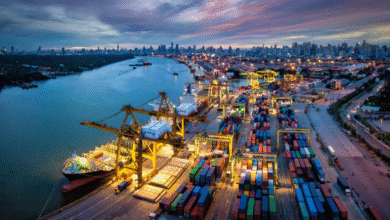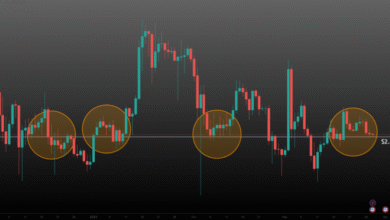Meeting Compliance with High-Performance Materials: Advanced Ceramics and A2L Refrigerants
In today’s fast-evolving industrial landscape, the focus on regulatory compliance has led to significant advancements in materials technology. Two key players, advanced technical ceramics and A2L refrigerants, are making strides in sectors ranging from manufacturing to HVAC. Each brings unique properties and innovations that not only meet current regulatory demands but also pave the way for future standards in durability, efficiency, and eco-friendliness. Let’s explore how these materials are shaping a compliance-ready future across industries.
The Power of Compliance: Why Materials Matter More Than Ever
With governments and organizations increasingly prioritizing environmental and safety standards, compliance is no longer just a requirement—it’s a crucial part of sustainable business. Materials that reduce environmental impact, improve performance, and enhance safety are in high demand, and advanced ceramics and A2L refrigerants are at the forefront of these needs. By focusing on these materials, companies can enhance their reputation, reduce long-term costs, and stay ahead of regulations.
What Makes Advanced Ceramics Stand Out?
Advanced technical ceramics at Wunder-Mold are engineered to meet extremely high standards of durability, resistance, and performance. Unlike traditional ceramics, these materials are designed for use in demanding environments, from aerospace to medical and industrial applications. Here’s how they’re transforming the way industries approach compliance.
1. Unmatched Durability and Resistance
Advanced ceramics can withstand high temperatures, corrosive substances, and intense wear, making them ideal for harsh environments. For example, industries that operate in high-heat settings, such as manufacturing, rely on these ceramics to maintain performance without degrading. This durability minimizes maintenance costs and meets stringent regulations on operational safety.
2. Low Environmental Impact
A surprising advantage of advanced ceramics is their environmental friendliness. While their production requires significant energy, their longevity and durability reduce the need for frequent replacements. This means fewer resources are consumed over time, supporting sustainability initiatives in sectors like automotive, medical, and even electronics.
Fun Fact: Some advanced ceramics are harder than steel! This makes them perfect for applications like cutting tools, which need to maintain sharpness under tough conditions.
3. Applications Across Multiple Industries
The versatility of advanced ceramics allows them to meet regulatory requirements across different fields. Whether used in semiconductor manufacturing or in creating heat-resistant components for medical devices, advanced ceramics help industries comply with material standards and safety regulations while offering long-lasting performance.
Why A2L Refrigerants Are the Future of HVAC Compliance
In the HVAC industry, new regulations at Gustave A. Larson emphasize the need for lower Global Warming Potential (GWP) refrigerants to replace traditional ones, which often contribute to ozone depletion and climate change. Enter A2L refrigerants, a class of mildly flammable refrigerants specifically designed to reduce environmental impact while maintaining energy efficiency.
1. Low GWP for a Greener Planet
A2L refrigerants have a significantly lower GWP compared to older refrigerants, which means they contribute less to global warming. This aligns perfectly with the push for eco-friendly solutions across industries, helping businesses meet regulatory standards while reducing their carbon footprint.
2. Mild Flammability: A Safety Benefit with Training
While A2L refrigerants are mildly flammable, they are designed for safe use in properly managed systems. Technicians need training on handling these refrigerants safely, which also encourages a higher standard of care in the HVAC industry. As regulations increasingly favor low-GWP refrigerants, A2L is positioned as a safe, environmentally friendly option.
Did You Know? A2L refrigerants are classified as mildly flammable because they are less likely to ignite compared to traditional flammable substances. Their specific chemical composition helps balance efficiency with safety.
How These Materials Support Long-Term Regulatory Compliance
Both advanced ceramics and A2L refrigerants play crucial roles in helping industries meet current and future regulations. By adopting these materials, companies can avoid costly penalties, reduce their environmental impact, and ensure safer operations.
Reduced Maintenance and Operational Costs
One of the primary benefits of these materials is their durability. Advanced ceramics require fewer replacements, and A2L refrigerants maintain HVAC efficiency while adhering to environmental standards. This reduces maintenance costs and ensures that systems are always in compliance, benefiting companies financially and operationally.
Enhanced Safety Standards
Materials like A2L refrigerants bring new safety considerations that lead to improved industry practices. The training required for handling A2L refrigerants means that companies must raise their safety standards, which has a long-term positive impact on the industry. Similarly, advanced ceramics’ high resistance to wear and tear adds to operational safety by minimizing the risk of component failures.
Preparing for a Future Driven by Regulation-Ready Materials
Industries across the board are realizing the importance of investing in materials that not only improve performance but also comply with increasingly stringent standards. With advanced ceramics and A2L refrigerants, companies are better equipped to handle evolving regulations and meet their sustainability goals.
In the coming years, materials like these will likely become even more integral to compliance strategies, offering both practical benefits and an eco-friendly edge. By choosing regulation-ready materials now, industries can set themselves up for success in a rapidly changing regulatory environment. Whether you’re in HVAC, automotive, or manufacturing, staying informed about advancements in materials technology is key to future-proofing your operations and ensuring compliance.





